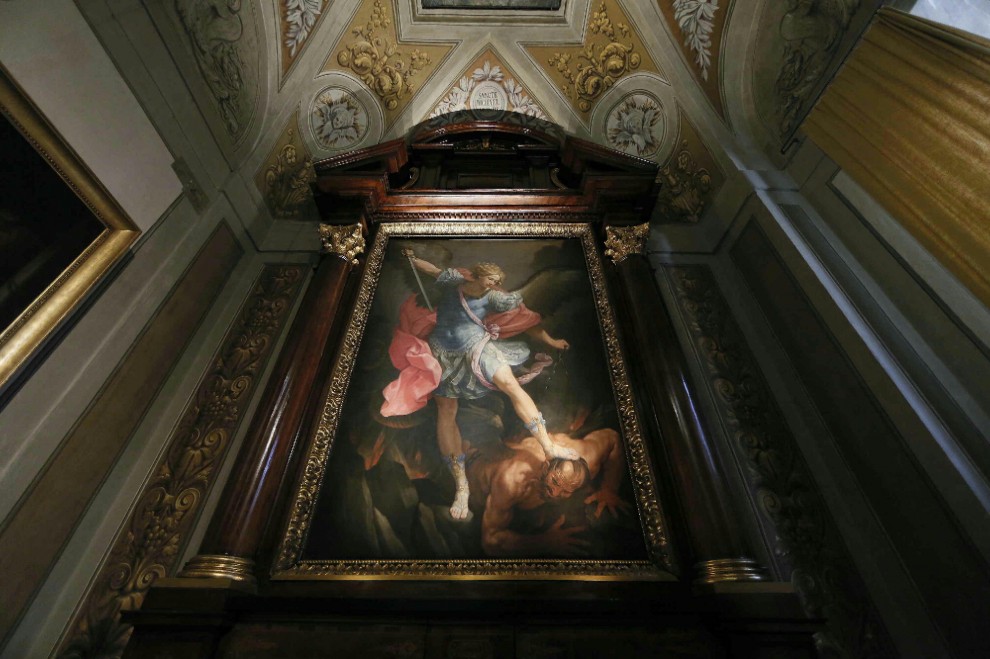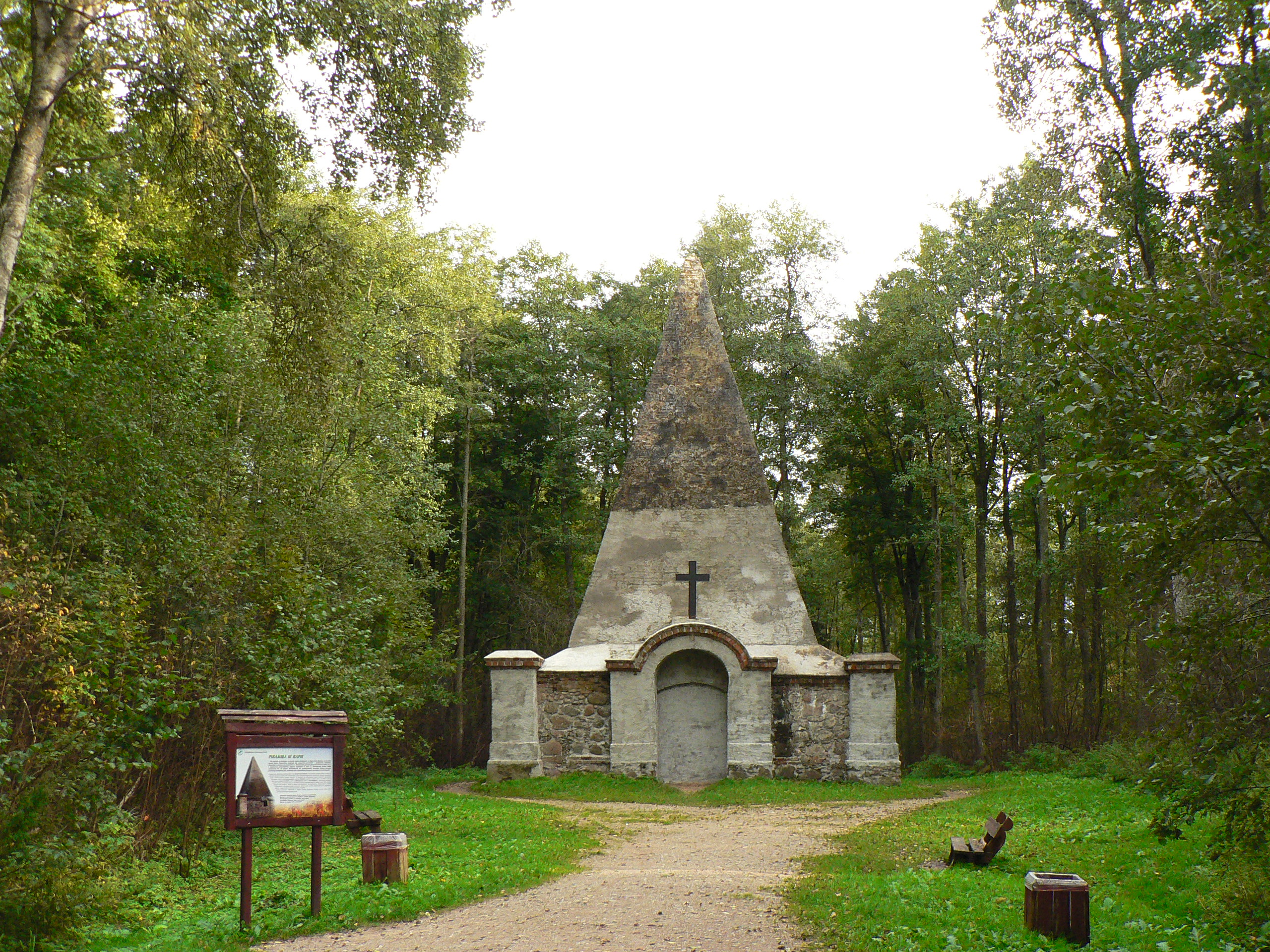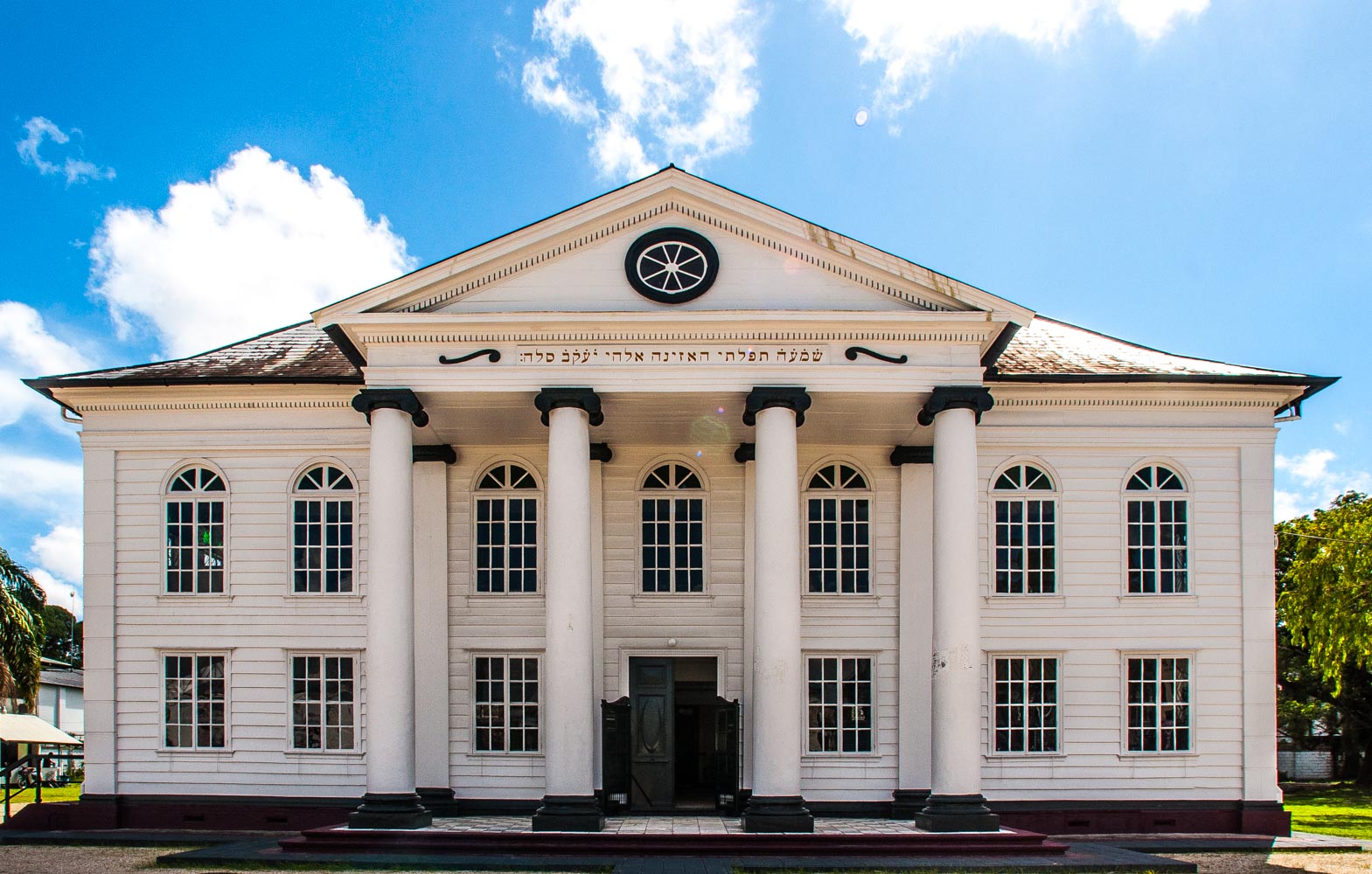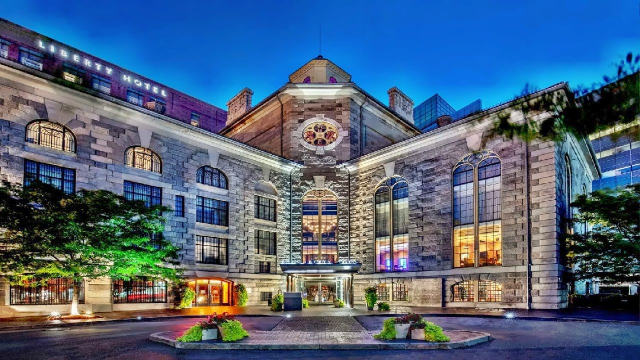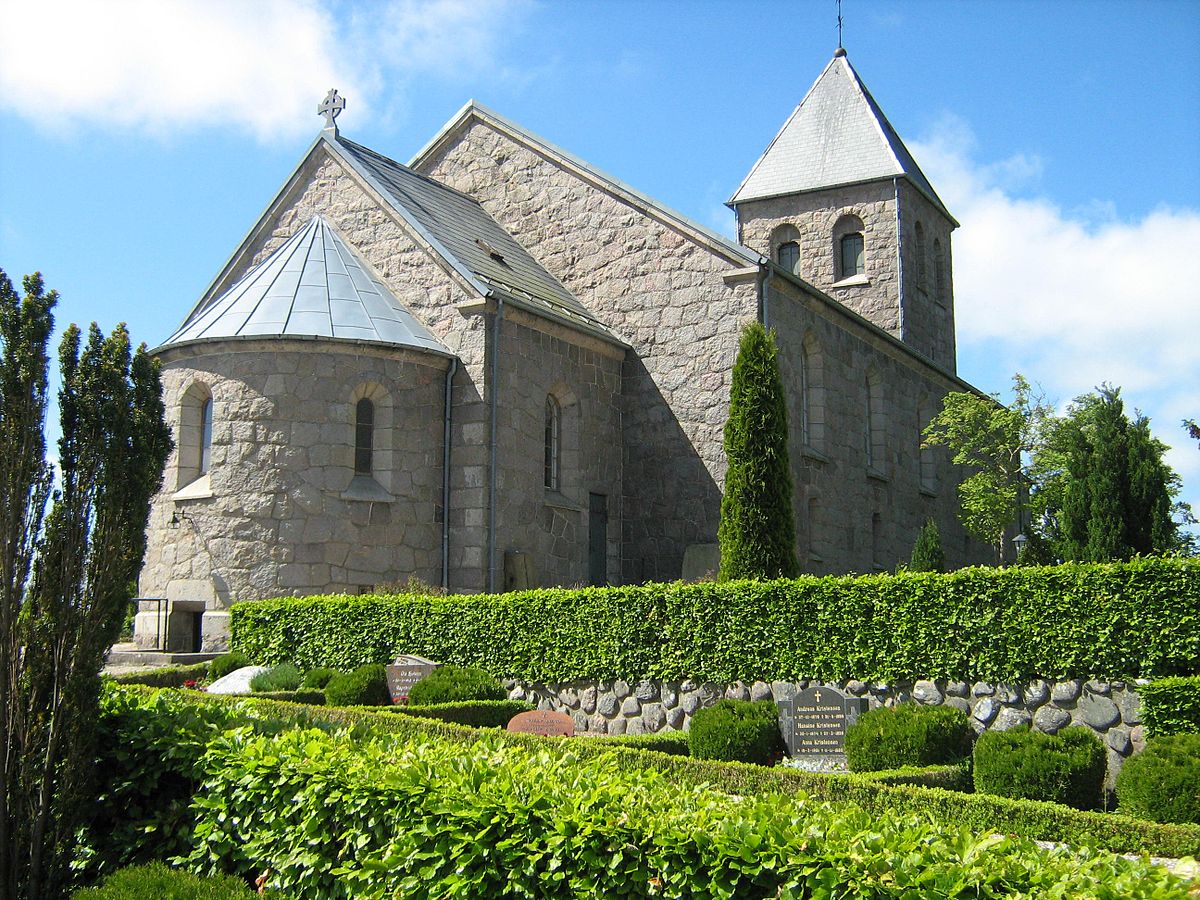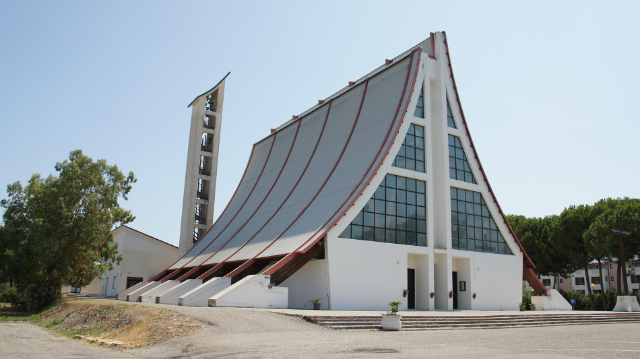he church was commissioned by Pope Urban VIII in honor of the brother of Antono Barberini, who belonged to the Capuchin order and built on a design by Antonio Casoni in the years between 1626 and 1631, a monumental structure in Rome particularly interesting for the crypt-ossuary where more than 4,000 Capuchin friars are displayed as artistic objects decorating all five spaces present.
The architectural structure of the building consists of a small nave with ten side chapels (five on each side), in which important relics and works of art are preserved. Friar St. Felix of Cantalice, St. Crispin of Viterbo and the son of King John III of Poland Aleksander Benedykt Sobieski, who was a Capuchin in the adjoining convent and died there in 1714, rest there. Among te works preserved are noted:
St. Michael the Archangel Chasing Lucifer (1635), oil on canvas, by Guido Reni, now in the Capuchin Museum attached to the convent;
Ananias baptizing St. Paul restoring his sight (1631), oil on canvas, by Pietro da Cortona;
Nativity of Jesus by Giovanni Lanfranco;
Saint Francis of Assisi receives the stigmata, by Domenichino;
Transfiguration by Mario Balassi.
The vault was frescoed in 1796 by neoclassical painter Liborio Coccetti, with the theme of the Assumption of the Virgin Mary.
